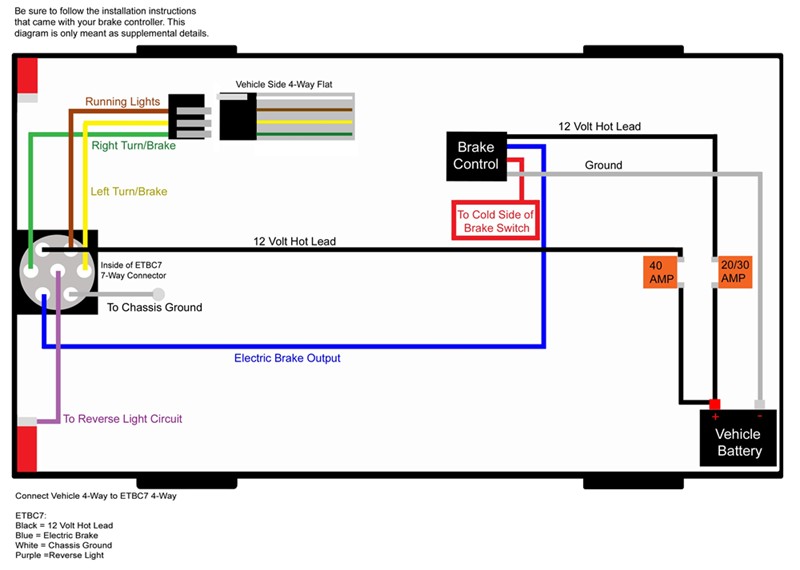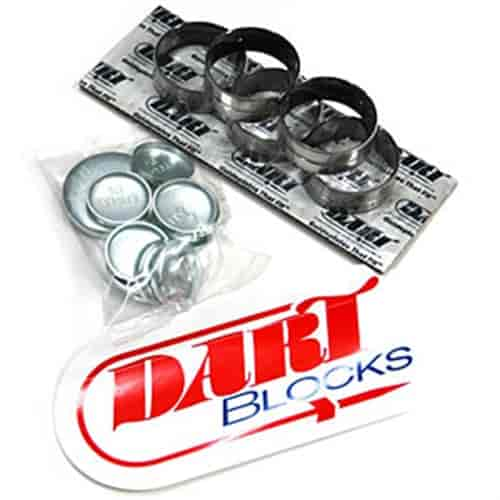For some reason, cam bearings hold an air of mystery and voodoo mechanics for many at-home builders. Professional engine builders often leave the cam bearing installation to the machine shop, and while some of that may be for the sake of time management, the fact that they don’t even own the tool to do it is mind-boggling.
I know this because when it came time to change out the cam bearings in a Mopar 383, I asked all my buddies if they had a cam bearing tool I could borrow—to no avail. Not a single one had ever changed their own, and a few of these guys build high-dollar motors for other people. I ordered a cam bearing installation tool from (PN 5312) and got to work. There are several key points to working with cam bearings. First, take your time and be careful, you can damage them if you drop or nick the edges. Second, pay attention to the old bearings and match each one to the new bearings.

They are different from #1 to #3 and so on. Finally, you must clock each bearing to align with the oiling holes in the block. Failure to do so will result in a catastrophe.
Each bearing should be installed dry, without any lubricant or oil on the block or the outside of the bearing.Replacing the cam bearings is not incredibly difficult as long as you follow the rules and pay attention. If you plan on building only one engine ever, then having the machine shop do the work versus buying the tool may be worth it. For me, the satisfaction of doing it on my own is worth the effort. A life-long gearhead, Street Tech Magazine founder and editor Jefferson Bryant spends more time in the shop than anywhere else. His career began in the car audio industry as a shop manager, eventually working his way into a position at Rockford Fosgate as a product designer. In 2003, he began writing tech articles for magazines, and has been working as an automotive journalist ever since. His work has been featured in Car Craft, Hot Rod, Rod & Custom, Truckin’, Mopar Muscle, and many more.
Jefferson has also written 5 books and produced countless videos. Jefferson operates Red Dirt Rodz, his personal garage studio, where all of his magazine articles and tech videos are produced.
You can follow Jefferson on Facebook (Jefferson Bryant), Twitter (71Buickfreak), and YouTube (RedDirtRodz). Related Articles.
Unless you have done this before, and have the tools, take it to a shop for that process. Most will do it super cheap, esp if you have them clean the block. A couple shops here if you pay them for cleaning, they'll do the bearing remove and install for free or for a $20.They did my bearings for much less than the cost of the tool. (although I HAVE done it before, I no longer have the tool for it)Don't try it without the correct tools, a mistake can be very costly.
And if you don't get them in straight or lined up with the oiling holes, wow, what a bad thing. If you find the right guy, we even had a young guy in town who would drive out to the shop and knock them out and a new set in for us.I think he charged like $40 for the road trip, labor, we supplied the bearings.(dealership, long story)If your going to do it, you might as well just get the shop to do the clean and new bearings.Saves you time and effort and if it's a stock bore block you can have it honed and checked ready to go when you get it back.Never hurts to scrub it out one last time before assembly though! I honed the cylinders myself last night.
It went really well. They look really good.i may just build my own tool to do it myself. I don't like the idea of pounding the bearings in. I think some lube and pressure would seat the bearings better. Just my opinion though.i would have just used the stock bearings, but they are all broken.
They literally split apart when i removed the cam.i ordered new bearings from summit and the summit 8600 cam while i was at it. It came out to $95 with shipping.this motor is going in a jeep wagoneer, so i'm looking for some better low end torque.are there any instructions anywhere for installing this cam? How is it supposed to be degree'd? I'm just looking for some reading material before i start the process. This is my first engine rebuild, i'm really enjoying it so far.purple72Gremlin.
Getlost4x4 wrote:i honed the cylinders myself last night. It went really well. They look really good.My guess is you broke the glaze. Using a standard parts store glazebreaker. Proper honing takes the right equipment and the correct grit for the type of rings you intend on using.
You'd use a different surface for moly rings as opposed to cast, for example. If the surface is 'too slick' the moly rings will take FOREVER to seat.Did you measure the out of round, taper, etc.? Is there any ridge left at all?If you can even slightly 'catch a fingernail' on it.
Cam Bearing Installer Instructions Not Included Trailer Youtube


Getlost4x4 wrote:i honed the cylinders myself last night. It went really well. They look really good.i may just build my own tool to do it myself. I don't like the idea of pounding the bearings in. I think some lube and pressure would seat the bearings better.
Just my opinion though.i would have just used the stock bearings, but they are all broken. They literally split apart when i removed the cam.i ordered new bearings from summit and the summit 8600 cam while i was at it. It came out to $95 with shipping.this motor is going in a jeep wagoneer, so i'm looking for some better low end torque.are there any instructions anywhere for installing this cam?
How is it supposed to be degree'd? I'm just looking for some reading material before i start the process.
This is my first engine rebuild, i'm really enjoying it so far.Are the cylinders clean? Looks really good dont mean much.Page 1.
Posts
- Candy Technology Usb Floppy
- Farming Simulator 15 Pc
- Make The Goth Girl Laugh
- Hp Chemstation Software
- Evaluating And Selecting Efl Teaching Materials Pdf File
- Leapfrog Talking Words Factory
- Adobe Flash Builder 4.7 Crack
- Value Investing Montier Pdf
- Alpha Technics 3000 Manual
- Jetboat Superchamps Crack
- Schecter Serial Number Decoder
- Anasazi Computer Program
- Soft And Beautiful Texturizer On Colored Hair
- Omnitrader 2011 Crack